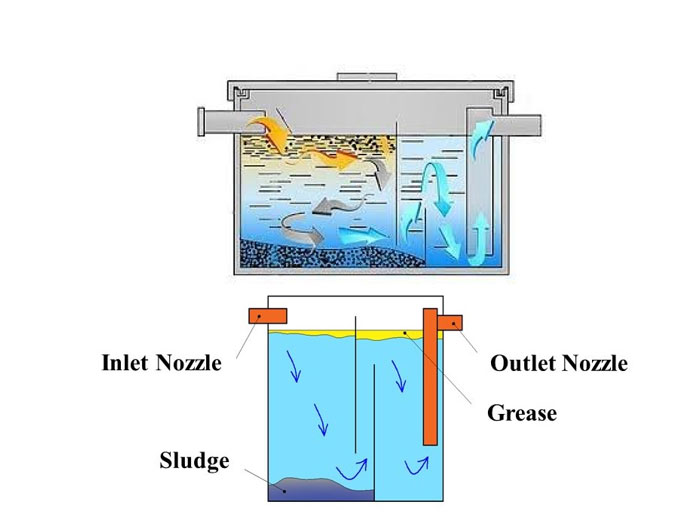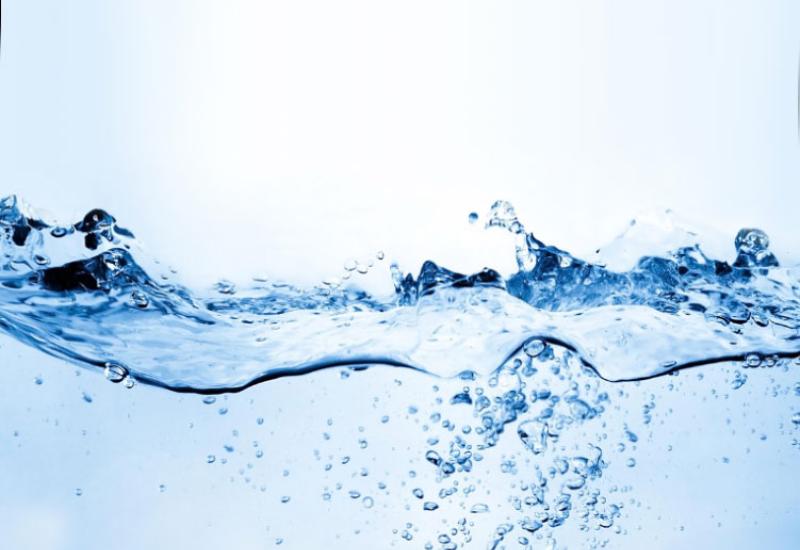In accordance with the Law of Ukraine “On Wastewater Disposal and Treatment,” the National Technical University of Ukraine “Igor Sikorsky Kyiv Polytechnic Institute” is connected to the city's centralized sewage network (on the condition that the university shall pay for sewage services under the concluded agreement).
Through the centralized sewage system, all the university's wastewater, along with that of the entire city of Kyiv, flows to the Bortnychi Water Treatment Plant, the main wastewater treatment facility in the capital, where the water is treated through several stages until it reaches an acceptable quality.
What happens next? The first stage involves the removal of bulky waste. The rake compartment consists of grates on which particles of large debris are trapped and automatic rakes that clear debris from the surface of these grates. It is worth noting too that the size of the holes in these grates at the Bortnychi aeration station in Kyiv amounts to 16 millimeters.
The garbage that is retained on the grates is squeezed out using special machines and sent to the Energia incineration plant.
Further, it is cleared of smaller impurities at sand traps. Some 60% of sand, clay, and organic matter larger than 0.25 mm is retained there. Sand contains more than 10% of organic matter, therefore it is not used in industry. The sand mass is removed from the sand traps to special sites twice a day. Approximately 20 tons of sand are collected annually.
Following the mechanical treatment stage, the water is directed to the primary sedimentation tanks. These are round basins 40 meters in diameter and 4 meters deep. In a span of nearly 120 to 150 minutes, as the water moves from the center of the settling tank to the collection tray, about 40% of the sludge falls out of it, which is pumped into methane tanks. The sludge is processed into biogas, which contains mainly methane (this is an anaerobic process, with a minimum amount of air). The resulting gas is used for heating the premises.
The water goes to aerobic tanks. There, it is saturated with air (hence the name “aerobic”) and colonies of microorganisms called activated sludge, which absorb organic matter and, accordingly, actively multiply in a favorable environment (Biological Treatment).
After the aerobic tanks, where the water stays for another 120 to 150 minutes, the activated sludge settles and is channeled to sludge wells. At this stage, the water flows through a canal nearly 9 kilometers long into the Dnipro River, and the excess sludge is discharged into sludge fields.
The wastewater, which is discharged into water bodies after treatment, must meet the requirements of treatment standards.
As an economic entity, Igor Sikorsky Kyiv Polytechnic Institute complies with basic requirements for wastewater discharge into centralized sewage systems; requirements for the quality and mode of wastewater discharge, and other requirements established by the relevant legislation.
To fulfill these requirements, the University conducts preliminary (first stage) sewage water treatment to remove grease and oils, thereby preventing the pollution and clogging of municipal sewage systems.
To this end, equipment for collecting grease (underground grease trap) was installed at the outlets of wastewater into the sewage system in the Student Catering Center (buildings 31 and 32) and the disease-prevention sanatorium at our University.
The system consists of 3 collectors:
- The first one contains the first grease trap chamber where separation occurs: grease rises to the surface owing to the difference in the specific gravity between water and grease products, while heavier suspensions and sand, among others, settle;
- sewage without grease gradually flows into the second collector – a sludge tank where further sedimentation takes place.
- Finally, in the third collector, the treated wastewater is discharged from the grease trap into the central (municipal) sewage system.
As grease and sludge accumulate, the collectors are cleared with specialized equipment twice a year or so.
To maintain the grease traps, pump out and dispose of the collected grease, Kyiv Polytechnic has concluded relevant agreements with Ukrainian licensed companies.
 Flow chart of a similar grease trap
Flow chart of a similar grease trap Government, industrial and public control is exercised in the field of wastewater disposal. Production control over draining is exercised in accordance with the procedure established by the legislation of Ukraine. Public control over draining is exercised by public environmental inspectors in accordance with the Law of Ukraine “On Environmental Protection”.
In alignment with its scientific activities, Igor Sikorsky Kyiv Polytechnic Institute carries out technological developments designed to treat wastewater and improve the water use and drainage system.
Based on the results of the analysis of the applied methods of wastewater treatment and the results of the analysis of the technological process of the Bortnytsia aeration station, student I. H. Zhytynska defended her master's thesis on “Substantiation of Resource-Saving Technology for Utilization of Excess Sludge at Aeration Stations” at Igor Sikorsky Kyiv Polytechnic Institute, under the guidance of her scientific supervisor, Ph.D. N.I. Zhukova (Institute of Energy Saving and Energy Management).
The research paper analyzes the environmental impact of sludge fields. The methods for utilizating fermented sludge are investigated, and the method of incineration offered. A comparative characteristic of the four most common methods for incinerating excess sludge is provided as well.
Also, the master's thesis on “Improvement of the water use and sewage system” was defended by Oleh Hrytsenko, a student at Kyiv Polytechnic’s Institute of Energy Saving and Energy Management (IEE).
Based on the results of the thesis, an article was published in the proceedings of the Second Scientific and Technical Conference of IEE Undergraduates. The article analyzes the current condition of the water supply system, water use and draining fees in Ukraine, compares it with European achievements in this area, and explores solutions for its modernization aimed at improving quality, accessibility and reliability. The author analyzed the indicators that impact the quality of water supply, as well as delved into analytical and statistical data from the Ministry of Regional Development, Construction, Housing and Communal Services.

